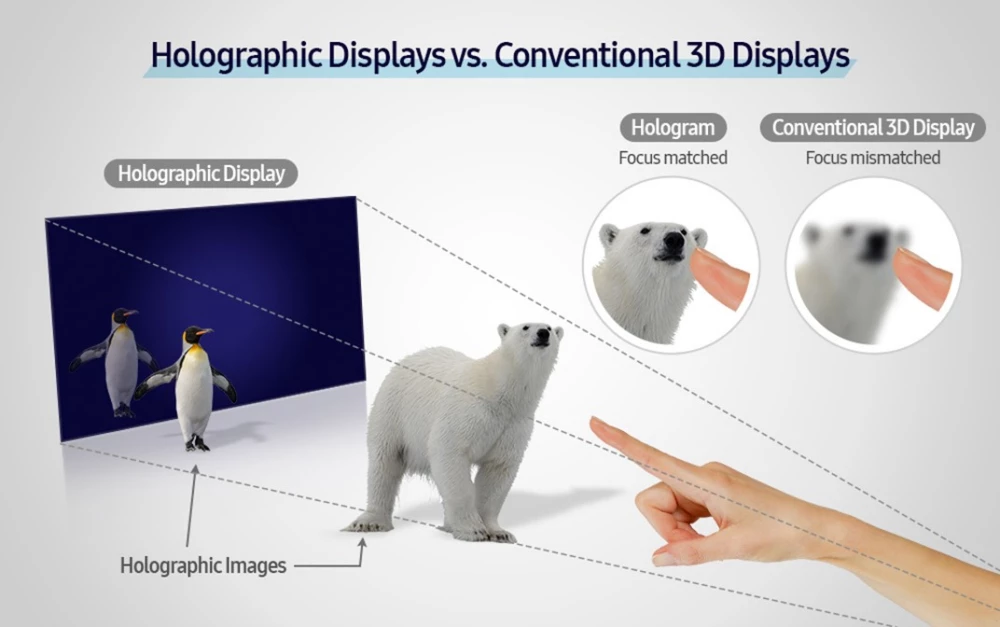True holograms are 3D images that appear to pop out of a 2D screen. The effect is usually created by lasers, with their light modulated just right so that different sections of the image appear to be different distances away, giving the illusion of depth.
The problem is, most of them are tiny, have fairly low resolution and are only viewable from a very specific angle.


Samsung has made a major stride towards realistic holograms, with a prototype thin-panel device that can display 3D images in 4K resolution with a wide viewing angle.
The Samsung prototype (the display is smartphone-sized) sports 4K resolution and can be viewed from a wider range of angles. Better yet, it does so with less bulky optical systems and just a single processor to run the holographic video in real time.
The key to the team’s device is a new optical element called a steering-backlight unit (S-BLU). This component uses a beam deflector to redirect the backlight in a given direction, which basically widens the viewing angle by about 30 times that of a holographic device without the S-BLU.
To crunch the numbers required to run a holographic video, the team used a type of semiconductor called a field-programmable gate array (FPGA), which calculates the images layer by layer, rather than as a cloud of points.
The end result is a thin device under 10 cm (4 in) thick, with a flat 10.1-in display that can "project" holograms with 4K resolution at 30 frames per second.
The team showed it off with a 3D video of a turtle swimming around coral, which a user could steer with a keypad; the turtle’s position is updated instantly, handling the real-time processing.
You can see the turtle hologram in action in the video below (although of course, a regular '2D' video wouldn’t do the effect justice).